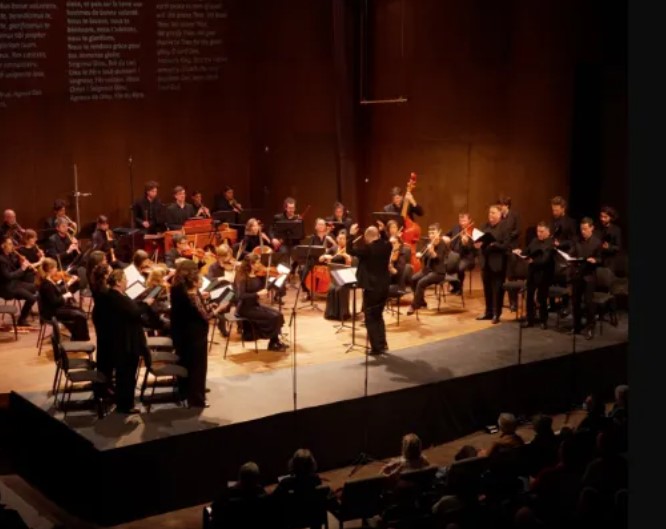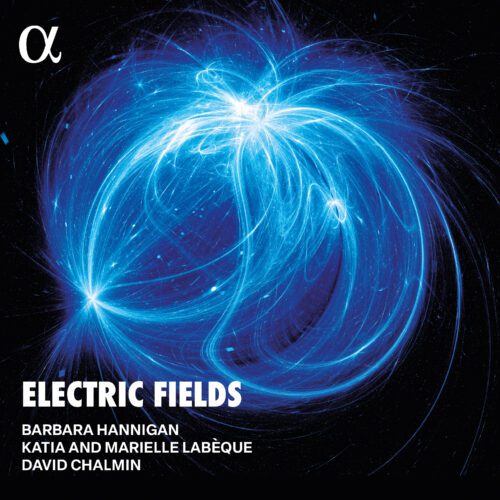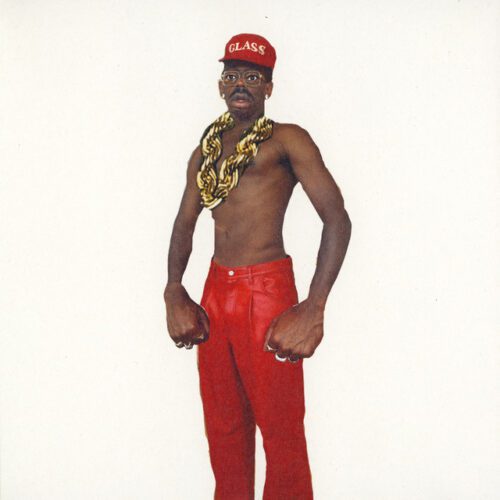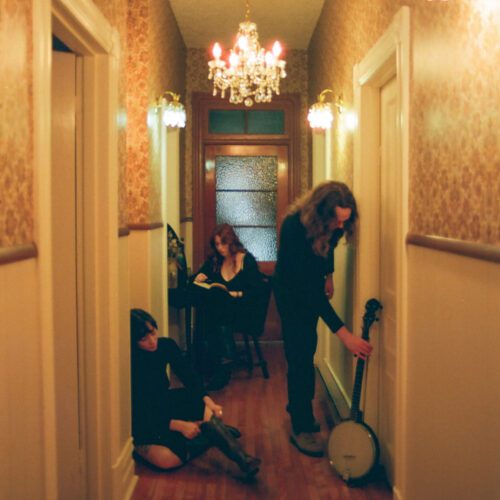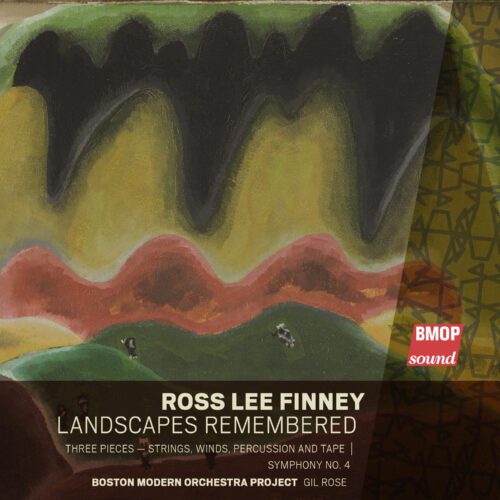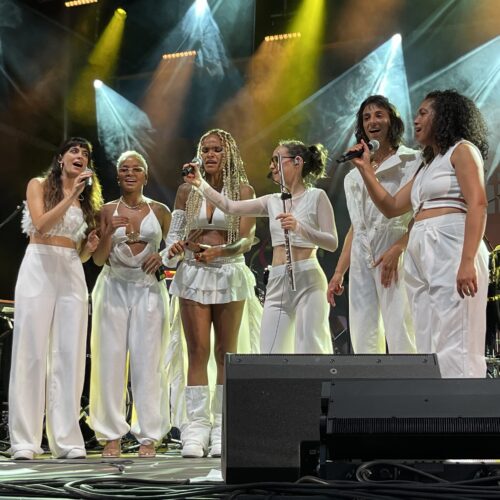The Arion Baroque Orchestra and the Studio de musique ancienne de Montréal (SMAM) joined forces Saturday evening at the Maison Symphonique to launch their respective seasons. For the occasion, a program dedicated to works composed for various British sovereigns of the era. 2024-2025 marks SMAM’s 50th season.
In the interests of fairness, the two conductors will each conduct one half of the concert, with Andrew McAnerney (SMAM) taking charge of the first half. Unfortunately, George Frideric Handel’s Zadok the Priest, which opens the concert, lacks direction. The 22 bars that precede the choir’s entrance must be interminable in their slow harmonic progression, so much so that the entrance presents itself as a veritable revelation. Yet there is little movement, and the chorus, despite its good power, fails to fill the gap. God save the King (not to be confused with the national anthem of the same name) is the best part of this piece, thanks to the agility shown by the choristers in their vocalizations, performed at rapid speed.
This was followed by two a capella anthems, in which the vocal prowess of the choristers could be admired. First, in William Byrd’s O Lord, may Thy servant Elizabeth our Queen, the accuracy of their timbre was thrilling, while in Thomas Weelkes’ magnificent O Lord, grant the King a long life, the direction applied to each long note enabled all seven voices to make themselves heard with ease and dictate the phrasing.
It’s up to the musical directors of our institutions to decide which works will hang on to the jewels of the repertoire to complete a program. Sometimes, it turns out, we are treated to an uninteresting work, obviously placed to “make time”. But fortunately, as was the case this evening, we are treated to a complete discovery of a jewel that we feel we should see live at least once more in our lives. William Boyce’s three anthems for the coronation of George III are now on that list. The first anthem is lively, the slow part full of sweetness and the end flamboyant, and ends with a superbly beautiful delay in the cadence. The second is sublime, with the continuo as sole accompaniment, leaving all the space to the choir. Don’t remember the 3rd.
The anthem at the end of the first half falls flat, unfortunately. In Handel’s My Heart is inditing, McAnerney’s conducting is discreet and somewhat lacking in energy. He mostly leads the chorus, which responds with great aplomb, but too often leaves the orchestra to its own devices.
After intermission, Mathieu Lussier takes the baton in Music for the Royal Fireworks by the same Handel. His direction is much more committed and demonstrates the desired articulations. In the Overture, the brass lead the way with bold crescendos. Hats off to the oboes and bassoons in the bourrée and first minuet for their lightness and balance of sound.
In the last two anthems, Lussier conducts both ensembles as one. The same articulations are noticeable in the musicians and choristers, more so than in the first part. For example, in Let justice and judgment, the second extract from Let thy hand be strengthened, you can feel the weight that is placed on every first beat of every bar, both in the introduction and in every choral entry.
As an encore, conductors McAnerney and Lussier offered Messiah’s famous Hallelujah, inviting the audience to sing along. What does this have to do with royalty? The story goes that it’s a direct link to tradition that the audience rises to its feet at Messiah performances. At the London premiere, King George II is said to have stood up at this very moment when he heard the words “King of kings, and Lord of lords” repeated.
And when the king rises, everyone rises.
